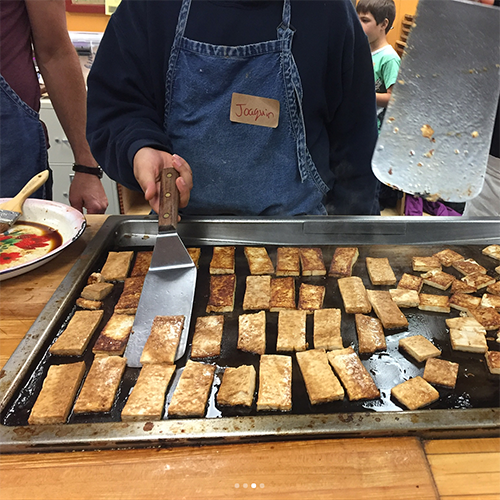For the Chef Meeting
- Udon Noodle Soup recipe – PDF
- Marinated Tofu recipe – PDF
- Soft-boiled Egg recipe
- Wash, Cut, Season, Roast Visual aid – PDF
Ingredients
- Udon noodles
- Eggs
- Water
Ingredients for the Udon Broth
- Water
- Carrots
- Napa cabbage
- Leek
- Scallions
- Garlic
- Ginger
- Shiitake mushrooms
- Kombu
- Soy sauce
- Mirin
ingredients For the Marinated Tofu
- Tofu
- Scallions
- Soy Sauce
- Sesame oil
- Rice vinegar
- Sriracha (or hot sauce of choice)
- Toasted sesame seeds





